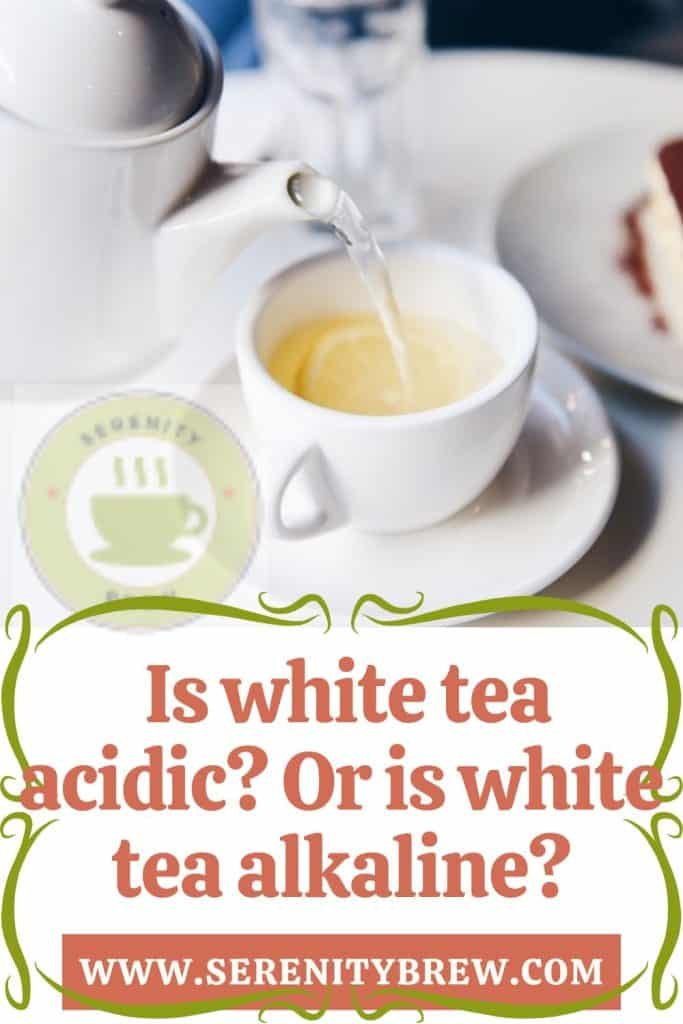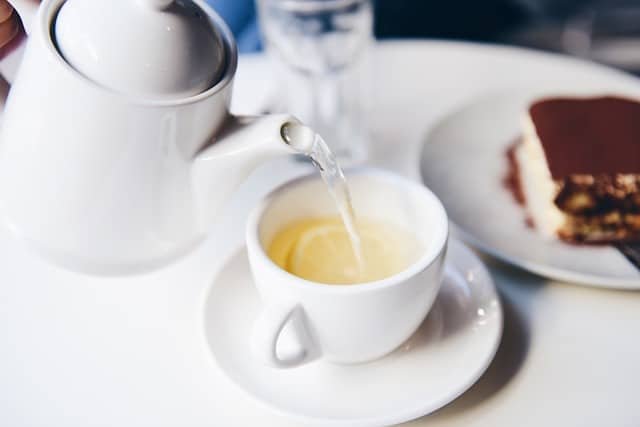
The White tea slows aging, has a delicate flavor and so little theine that it can be drunk all day, plus it is very relaxing. Among its many properties is that it helps maintain the body’s alkalinity. In this article we will talk about whether white tea is acidic? Or is white tea alkaline?
Both white tea, green tea, and matcha tea contain a large amount of antioxidants, but white tea is much more so. What this process does is neutralize the oxidation of the cells, which means that the negative effects of the environment on the cells are reduced. In this sense, drinking white tea produces a beneficial action on the skin: it reduces spots, wrinkles and lack of smoothness.
On the other hand, if we drink white tea regularly we will delay the signs of aging. It must be considered that people who live in cities tend to be more sensitive to the effects produced by free radicals.
What is white tea and what is it for?
White tea was born 5,000 years ago in China by chance. It is a delicate and exquisite drink. It is said that while Emperor Shen Nung was taking a walk, he felt thirsty and asked for water to be boiled in a pot. Apparently some white tea leaves fell into the hot water, giving it a prodigious taste and relieving his discomfort.
It may be a fanciful story, but what is known is that white tea is a healthy and natural drink. Today it is the drink that has the highest amount of antioxidants. It is a magnificent tonic and is the least processed. Also, the White tea works for the following.
Contribution in antioxidants
The amount of antioxidants that white tea has is higher than that of green tea and black tea. If you include it in your breakfast, your liver and your immune system will benefit from the following contributions: epigallocatechin gallate (EGCG) which are polyphenol antioxidants, tannins (because they are lower than other teas, their flavor becomes more smooth and less astringent) and theaflavins (TFS) which are the polyphenols that give it its particular flavor.
Help in weight loss
In the popular sphere it is said that drinking white tea promotes weight loss, because:
- Inhibits new fat cells from forming.
- It is responsible for moving the most resistant fats contained in adipose cells.
- Accelerates metabolism (stimulates lipolysis) to burn calories.
Instead of having light drinks, opt for a good cup of white tea, which you can also combine with mixed fruit smoothies.
Improves skin and hair
Due to its high antioxidant content, white tea combats oxidative stress, so that skin looks better and hair is healthy and beautiful. EGCG catechins prevent hair loss and are effective as part of the treatment of seborrheic dermatitis. In addition, since it has a large amount of phenols, it strengthens and stimulates the production of elastin and collagen.
Maintains a good energy level throughout the day
The small amount of L-theanine in white tea increases alertness and provides a calming effect on the mind. It is not a stimulant like coffee, but it is a good moisturizer and is ideal for maintaining energy throughout the day.
Gives health to the liver
Liver functions are stimulated thanks to the antioxidants, vitamins and minerals in white tea. To take advantage of its properties, it is advisable to drink 1 or 2 cups of tea a day.
Which is better green or white tea?

White and green tea go through a low oxidation process, so differentiating between them requires a more experienced palate. Let’s move on to see some differences and similarities of these tasty teas.
Elaboration of the same sheet
Both white tea and green tea are made from the leaves of the Camellia sinensis tea plant. White tea leaves are harvested earlier than green tea. In the production of white tea, only the essential parts of the tea plant are used.
Brewing methods
The method of elaboration of both types of teas is the same, the leaves are collected and briefly withered. For example, white tea is gently steamed, so the natural oxidation process of the leaves stops. The least oxidized variety is white tea.
In the case of green tea, the green tea leaves oxidize a bit more, before the process stops. Green tea production continues with other phases, in the case of white tea the process stops there. White tea is said to be less aggressive than green tea.
its flavors
There are several varieties of green teas, so it is difficult to define their flavors. Its flavors are determined by an important vegetable component. In the case of white tea flavors, they are usually characterized by being delicate and smooth. It is a tea for sensitive and experienced palates, in addition, it is usually one of the favorites of tea connoisseurs.
amount of caffeine
It is impossible to know how much caffeine a tea contains, because it depends on a number of variables, including the crop, the type of leaf, the time it is infused, etc. However, white tea is said to contain less caffeine than green tea, but this will depend on what has been said above. All teas in general have their beneficial effects on health, these depend on the degree of oxidation to which they have been subjected. However, the oxidation process that the various teas go through determines the concentration of antioxidants. Both teas are low oxidation degrees, but the least oxidized is the White tea.
